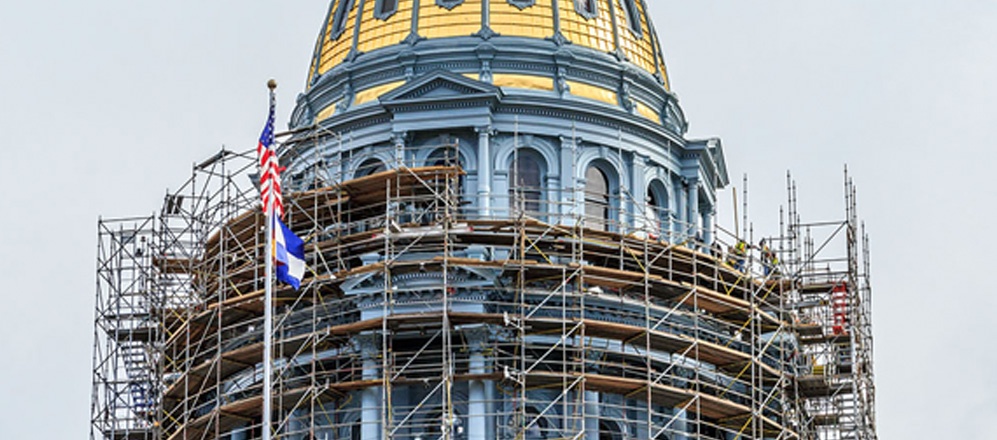One of the major challenges of the entire project was to establish how workers would have access to the dome and how materials would be transported to and from it. To complicate matters, numerous restrictions on the scaffold design were put in place to protect the delicate structure during the construction process. This presented the engineers at DHG with two major problems: how to set a scaffold weighing hundreds of thousands of pounds on a historic rooftop, and how to stabilize the scaffold without being allowed to bolt or fasten to the structure itself.
Due to the fragility and age of the roof, there was limited capacity available to support the dead weight of the scaffold alone, not to mention the equipment, materials and workers who would be utilizing it. DHG engineers developed a design to carefully distribute the scaffold loads amongst the designated bearing points across the rooftop to optimally apportion the dead load and maximize the allowable construction live loads. In order to achieve this, DHG engineers devised a method of setting stringers and sub-stringers at various angles and directions across the roof to properly transfer the loads to the building.
With minimal building façade penetration and limited access allowed, DHG engineers developed horizontal bearing (bumps) and tie connections that would not only ensure structural stability of the scaffold, but would respect the historical design and significance of the structure by not infiltrating the building façade. The number and spacing of the ties was complicated further with the fact that the entire scaffold structure was to be enclosed with protective tenting to shield the exposed structure from weather during construction. The finalized enclosed scaffold was designed by DHG’s engineers to resist winds up to 90 miles per hour. This design was put to the test in March of 2012 when Denver recorded gusts of 70 miles per hour during a spring storm.




